National Metal and Materials Technology Center, Thailand
In many emerging economies, researchers, inventors and entrepreneurs face many barriers to successfully commercializing innovations. Limited exposure to the commercial sector, less developed technological capability, and a general focus on academic publishing instead of intellectual property (IP) means that in many cases it is easier and less risky for companies to purchase technology from abroad instead of developing it locally. Many of these economies are also based on agricultural commodities, and slim profit margins make it difficult for players in the agricultural industry to take a risk on a locally developed technology that has yet to be proven.
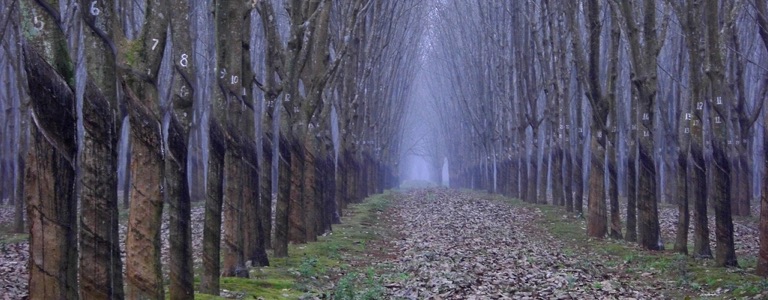
Although a number of developing countries have successfully allowed market forces to drive domestic innovation, in many of them technology transfer organizations (TLOs) have taken a leading role. The Kingdom of Thailand (Thailand) is no exception, and a number of agencies and programs in the country are encouraging the development and commercial dissemination of technology domestically. One such leading organization in Thailand is the Industrial Technology Assistance Program (ITAP), a division of the National Science and Technology Development Agency (NSTDA). In 2006 and with the assistance of ITAP, researchers at NSTDA developed a process to reclaim rubber from the waste of rubber factories, which has the potential to drastically improve the industry in Thailand.
Research and development
Representing over 10% of Thailand’s GDP, the agricultural industry is an integral part of the country’s economy. Natural rubber in particular is one of Thailand’s most important agricultural products. Raw natural rubber and derived products represent five percent of Thailand’s exports, and as of early 2011 the country is the world’s leading natural rubber producer and exporter. Because of the importance of rubber to the country’s economy, Thailand invests heavily in the research and development (R&D) of all aspects of rubber production, from the cultivation of latex trees to final processing.
Demand and cost for natural rubber has continually increased, and by 2010 doubled over what it was in 2005. Processing natural rubber also requires the use of highly toxic and volatile chemicals such as acids, ammonia and formaldehyde, which can negatively impact the environment and poses a safety risk for employees. Because of these considerations, R&D in the rubber industry in Thailand has focused on increasing the yield of rubber and reducing or more efficiently managing the use of volatile chemicals during processing. NSTDA’s Rubber Research Program (RRP), which is part of the National Metal and Materials Technology Center’s (MTEC) Polymer Research Unit (PRU), focuses on these and a number of other challenges facing the rubber industry in Thailand.
Natural rubber is an elastic hydrocarbon polymer that comes from latex, a milky substance that is the sap in some plants, the most common of which is the para rubber tree. Latex is collected from para rubber trees through making a precisely angled incision into the bark of the tree. This triggers the flow of latex to the incision as a defense mechanism, which is then collected in a vessel attached to the tree. Raw latex coagulates naturally when exposed to air, so it must be treated or processed in a way that controls coagulation and maximizes the desired elastic properties. After collection, raw latex is processed into one of three semi-finished states before being supplied to rubber manufacturers: concentrated latex maintained in a liquid form; smoked solid latex sheets; and solid latex blocks. Concentrated latex is more widely used and is essential in the production of a wide variety of rubber and chemical products.
When rubber latex is tapped from the para tree, it comes out with a solid rubber concentration of 25 – 40%. Blending with latex from a variety of other sources brings the concentration to the industry standard of 35%. Water is then removed from this blend by centrifuge to increase the concentration to 60%, and the various aforementioned chemicals are added to control coagulation and prevent bacteria degradation. The final concentrated rubber latex is sold to rubber products manufacturers to make dipped rubber products (those products made with molds).
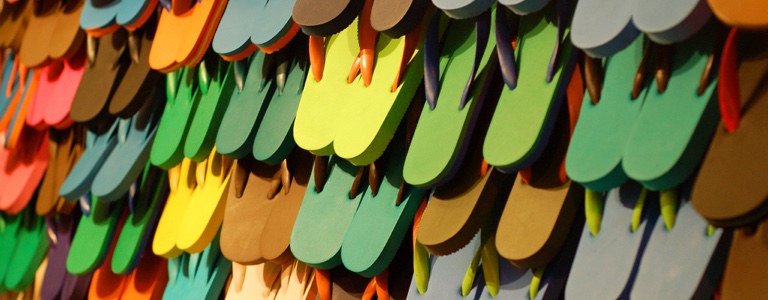
Each of these processing stages results in waste, and in that waste are untapped residual rubber solids. The rubber solids in the waste can be defined into three categories. The first is “skim” rubber, which is the water removed from the centrifuge process. This water still contains approximately 3 – 8% rubber solids. The second is “sludge”, which cakes inside the centrifuge and other machinery and also pools at the bottom of latex reservoirs. Sludge is removed at regular intervals during processing. Lastly is “washing water”, which is the water that is used to wash out centrifuges and other machinery. A small amount of rubber solids is dissolved in the washing water.
Of the three categories, skim rubber contains the most rubber solids and has the most potential to be commercially viable. To that end, MTEC launched an R&D program to develop a new process for recovering rubber solids from skim rubber. However, initial research suggested that such a process would be difficult to commercialize. With this in mind, a chance request by an industry partner involved in the project led to a shift to focus on recovering rubber solids from sludge instead of skim. Although it would have a lower yield, commercialization would be much easier.
As of the mid 2000s, there were 15 major companies processing and selling concentrated rubber latex in Thailand. One of these companies was intrigued by an article in a technical journal about recovering rubber solids from skim rubber. Hoping to recover the rubber solids which remain in the discarded water, the company contacted ITAP in 2006 to see if a technical process could be developed to do just that.
ITAP contacted PRU and found that it had in fact already developed a process for recovering rubber solids from skim rubber in the laboratory. This process adds concentrated sulfuric acid to the skim rubber, which forces coagulation of the solids into floating lumps of rubber that could be separated from the surface of the liquid. The extracted rubber solid is generally of low quality and can only be used in the production of items such as rubber bands. Even so, local rubber companies expressed interest, and five of them agreed to host visits by MTEC researchers with the aim to develop a pilot program to test the process on a large scale at a factory.
Despite these advances, the technology required expensive additional equipment and was never commercialized. However, an even more exciting development was born from this research. During the development of the pilot program, one of the participating companies had an informal discussion with MTEC researchers and mentioned the benefits of being able to recover rubber from the sludge that builds in the nooks and crannies of processing equipment during latex production, or that which sinks to the bottom of latex pools. Researchers tended to ignore the sludge because it contains a very small percentage of rubber, the latex in it is already solidified (thus making it less valuable), and it contains high amounts of inorganic substances which were added during processing. Although the sludge could be used as low-grade fertilizer, the high rubber content lowers its effectiveness. Because of these factors, rubber processers generally consider sludge neither a valuable source of rubber nor a viable fertilizer, and usually pay to have it removed.
However, the company that approached MTEC researchers saw an overlooked opportunity: if the rubber solids could be separated from the inorganic material, it would result in two important economic opportunities. First, rubber output could be increased from the same inputs, and second, the removal of the inorganic material would allow the production of a high-grade fertilizer, which could be sold to offset the cost of chemicals used in processing.
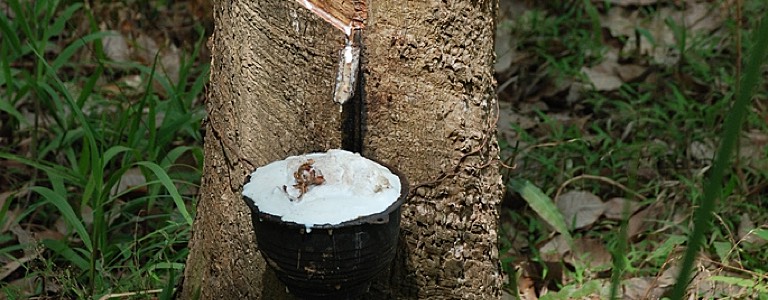
Intrigued with the potential of such a process, MTEC researchers focused their early R&D on removing the chemicals from the rubber to purify it. However, this proved to be an exceedingly difficult task because even though the sludge was primarily rubber with a small percentage of residual chemicals, there was no easy way to viably remove the chemicals to make usable rubber. In addition, such an approach proved that it was nearly impossible to yield any significant volume of marketable fertilizer.
Faced with this dilemma, an RRP researcher wondered if there was a way to get the rubber out of the chemicals instead of the chemicals out of the rubber. RRP was very familiar with technologies surrounding separating rubber from many other research projects, including the aforementioned skim rubber process. This innovative approach led RRP to successfully develop a way to remove rubber from the residual chemicals in the sludge.
Invention
The invention is a process which involves immersing the sludge in a liquid medium, such as water, and then adding acid to lower the pH (the measure of the acidity of a solution) to a range from 0 to 3.5. The acid causes the solid rubber to clump together, which can then be easily collected and separated from the liquid medium. The recovered rubber is washed and dried, after which it is suitable for sale. The remaining liquid is then adjusted to a pH level between 6 and 14, which causes the inorganic substances to precipitate out. One of these substances is magnesium ammonium phosphate, which is extremely valuable as a fertilizer as well as for use in ceramics manufacturing.
After inventing this initial process, RRP researchers and personnel from the company went to work on refining it to yield even greater results. After optimizing the required chemical formulations to achieve the highest level of rubber recovery, the R&D team realized that the chemicals used in the process are also used in other steps of rubber manufacturing, many of which are discarded with waste water after use. Reuse of this waste would enable further savings, making the process even more efficient.
Instead of using water as the liquid medium, the R&D team reasoned that the residual solution from the centrifuge process, cleansing water or discarded water from other parts of rubber processing could be used. Similarly, instead of adding selected acids to separate the rubber, excess acidic solution from the natural course of rubber processing can be used with no additional material cost. The use of these waste streams can be used as many times as necessary to achieve the desired rubber recovery level.
The improvements on the original invention led to even greater commercial value. Using waste water instead of fresh water and residual chemicals instead of new chemicals increases a rubber factory’s output without increasing cost. Results indicate that by using existing water and chemical waste, approximately 15% of the sludge can be recovered as marketable rubber solids. A high-grade fertilizer can also be developed, which can be sold to offset any cost a rubber processor incurs by using the new process. In addition, impurities in waste water are reduced, which translates into savings for wastewater treatment. A safer working environment is also provided, as employees have to manage fewer volatile chemicals.
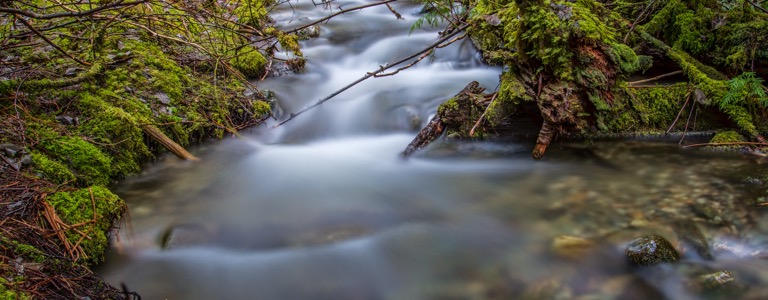
Although many of these factors and techniques can also apply to a process for skim rubber, there are subtle but important differences. Applying a similar technology to skim rubber will only recover about 5% of the solid rubber, whereas up to 15% can be recovered from sludge. In addition, using the process with skim rubber will bring with it none of the additional benefits brought from reusing waste water and chemicals. At the same time, such a process requires additional equipment, which further lessens the economic benefit. Therefore, the process as applied to sludge rubber is truly an innovative process that brings many positive benefits.
IP management
NSTDA strives to protect all of its developed technologies through strategic use of the IP system. Securing IP rights (IPRs) of NSTDA-funded research is undertaken by the TLO, specifically through the IP Management Group (IPM) and the IP Policy Group (IPP). All national and international patent applications are drafted by IPM, and with over 150 applications submitted on average every year, it is one of Thailand’s most experienced IP management group. IPM is also responsible for any additional IPRs and other means of protection such as trade secrets and non-disclosure agreements (NDAs). Drafting NSTDA policies about the creation, protection and exploitation of IP is the responsibility of IPP, which also advises working committees at the Ministry of Science and Technology on IP policy.
Patents and trade secrets
Because of the perceived value of this technology in the rubber industry, NSTDA drafted a patent application for the process to recover residual rubber solids from sludge waste. Applications were made not only in Thailand, but also in the other neighboring major rubber producing countries of Malaysia, Indonesia, and India. National and international applications were filed in 2009, and as of early 2011 are still under examination.
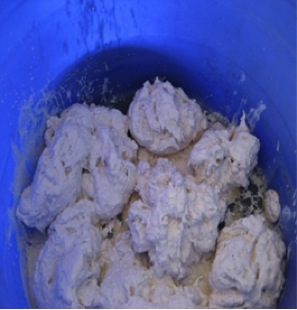
processing equipment (Photo: MTEC)
Although patents are the primary tool with which NSTDA protects its innovations, at times a combination of other means of protection, such as trade secrets, is necessary. This can be illustrated in the sludge rubber recovery technology, which brought several IP challenges. First, the process is straightforward and easy to replicate. Second, there is no way to detect whether recovered rubber was derived from this process, or from any other source, so enforcement is difficult. Finally, since a major benefit of the technology involves using existing chemicals and manufacturing process flows, potential competitors and customers already possess a great deal of relevant knowledge.
Taking this into consideration, IPM determined that protecting the know-how of the process via a trade secret was essential. The patent application described a number of effective acidic compounds. However, the exact amount of each compound that is necessary for optimal performance was left out. This information is protected by NSTDA as a trade secret. Moreover, because an important benefit of the technology is to save costs by utilizing existing waste streams, the formulation must be adjusted to the unique requirements of each factory. This reaffirms that the know-how of NSTDA researchers is vital to the successful commercialization of the technology, and is therefore protected as a trade secret.
Technology transfer
In 2005, NSTDA formed the Technology Management Center (TMC) with the goal of managing scientific R&D and commercial linkages and accelerating technology development within the private sector in Thailand and abroad. With the formation of TMC also came the formation of the Technology Licensing Office (TLO), which is the main vehicle with which NSTDA transfers technology. The TLO is comprised of approximately 30 employees with a wide range of expertise in IP and technology marketing in a wide range of industries, and consists of three groups: the IP Management Group (IPM), the IP Business Group (IPB), and the IP Policy Group (IPP). Through these three groups, the TLO handles all IP related issues (such as patent applications), identifies NSTDA technologies with commercial potential, finds qualified licensing partners, and develops and manages NSTDA policies for the creation, protection and exploitation of IP.
Benefit sharing is important to NSTDA, and as such researchers at NSTDA organizations involved in new technologies brought to the market receive 70% of all income up to a threshold of 1 million Thai Baht (approximately US $30,000). After this threshold is reached, researchers receive 30% of any additional income. In the case that the research was funded by NSTDA but R&D was conducted at another organization, NSTDA receives 21% while the researcher’s organization receives 64%.
Regardless of where the R&D takes place, in order to offset operating costs the TLO receives 15% of total revenue, calculated from both up-front and royalty payments. This creates opportunities beyond the TLOs activities of securing and commercializing NSTDA research. In the long term, it allows the TLO to provide commercial services to any outside organization or company on a fee basis. As it develops its capabilities, the TLO envisions that it will be able to create technology portfolios and commercialization strategies for R&D performed by a number of research centers domestically and internationally.
Licensing and commercialization
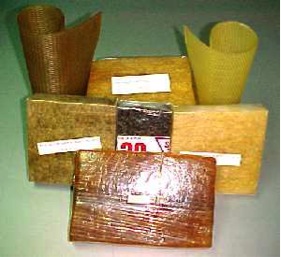
With the technology transfer and IP management policies in hand, the TLO determined that licensing was the best way in which to commercialize the technology. Licensing agreements are managed by the IP Business Group (IPB) that works within the TLO. The first licensing agreement was entered into with the company that suggested the idea for recovering rubber from sludge instead of skim. Because of its involvement early on, the company was granted a lower initial licensing fee. Furthermore, because of the difficulty involved in monitoring the usage and sales of products resulting from this technology, the company was not required to pay any royalties. In addition, a provision in the licensing agreement stated that the TLO would only license the technology to a maximum of five rubber producers during the first three years.
As of early 2011, the technology has been commercialized through licensing agreements with four companies (all royalty free) and the TLO is in discussions with a fifth. Because of the competitive nature of the worldwide rubber industry, the TLO has only entered into licensing agreements with Thai companies. Once these agreements expire, the TLO will review this strategy to determine if the technology can also be successfully commercialized in neighboring rubber producing countries such as India, Indonesia and Malaysia.
Business results
Because of the nature of the technology, it is difficult to concretely gauge its commercial success. Although there is no clear way to determine how much rubber was sold as a result of using the technology, as of early 2011, through licensing agreements it was commercialized with four of Thailand’s largest rubber producers which have over 50% market share. The technology has also clearly improved the financial health of the licensees, as they are able to increase their production output without any additional equipment or costs. Implementing this technology gives the Thai rubber industry an important boost, and potential commercialization abroad will strengthen the international presence of NSTDA while bringing in revenue through licensing, which can be used to develop further innovations.
From Sludge to Profit
In countries such as Thailand, the gap between the laboratory and commercialization can be considerable. However, by leveraging multiple resources including strong IP policies, technology transfer, and trade secrets, NSTDA was able to facilitate the transformation of the sludge rubber recovery technology from the laboratory to the commercial sector. Commercialization of the technology has enabled companies to turn waste into profit while protecting the environment and providing safer working conditions.
Source: WIPO

 Client Focus
Client Focus